This is a drawing of Pluto and its moon Charon.
Click on image for full size
Image courtesy of NASA/JPL. This image is in the public domain.
AU
AU stands for Astronomical Units. Distances in space are too large to measure in Earth standards like miles or kilometers. For distances too large to measue in AU, we use light years. A light year is the distance light moves in one year.
To be exact, an AU is the distance between the Earth and the Sun, which is 1.0 x 10^9 km, or about 93 million miles. For reference, Mars is 1.5 AU from the sun, Jupiter is 5 AU from the sun, Pluto is about 39 AU from the Sun, the heliopause is about 100 AU away, and the Oort Cloud is about 100,000 AU.
You might also be interested in:

During a period of about two days in early May, 1998, the ACE spacecraft was immersed in plasma associated with a coronal mass ejection (CME). The SWICS instrument on ACE, which determines unambiguously
...more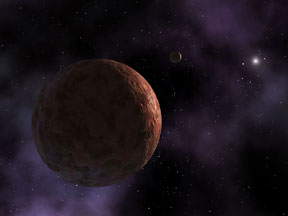
Astronomers have announced the discovery of a large new planetoid named Sedna. Mike Brown of the California Institute of Technology, Chad Trujillo of the Gemini Observatory in Hawaii, and David Rabinowitz
...more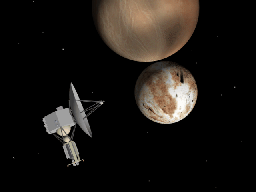
AU stands for Astronomical Units. Distances in space are too large to measure in Earth standards like miles or kilometers. For distances too large to measue in AU, we use light years. A light year is the
...more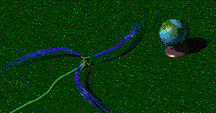
The solar wind is formed as the Sun's topmost layer blows off into space carrying with it magnetic fields still attached to the Sun. Gusts and disturbances form in the solar wind associated with violent
...more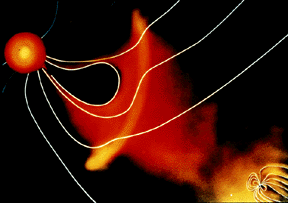
For a planet to be affected by a blob of material being ejected by the sun, the planet must be in the path of the blob, as shown in this picture. The Earth and its magnetosphere are shown in the bottom
...more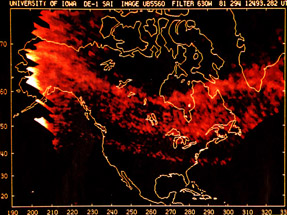
The aurora we are most familiar with is the polar aurora. This is what people are referring to when they speak of the northern or southern lights. But there are other less-known auroral activity, such
...more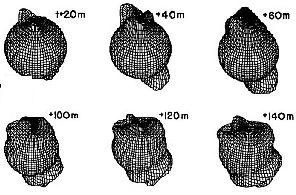
This figure shows the effect of the aurora on the atmosphere. When FAC's enter the atmosphere and create the aurora, they warm the atmosphere impulsively. This impulse travels throughout the atmosphere
...more














